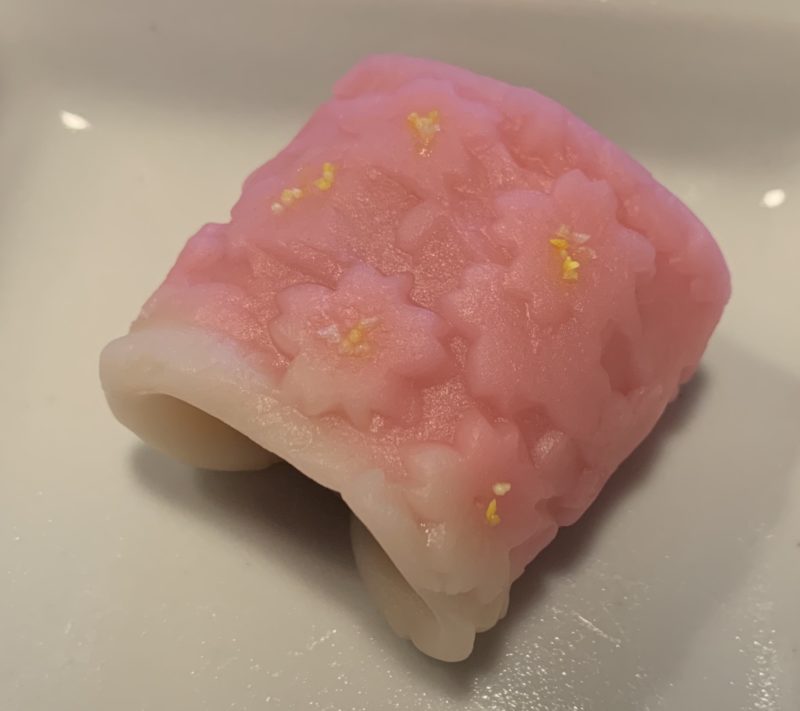Our shop has a cafe sign, but actually sells vintage kimonos. At least in our blog, I would like to list delicious Japanese sweets and Japanese tea on the cafe menu–but,only pictures…
In Japan, there has been a sweet called wagashi made primarily from plant-based ingredients since ancient times.Originally introduced from China, it has become a part of Japanese culture that has achieved its own development. Not only taste but also scent and appearance, it is a sweets that you can enjoy with your five senses. I would like to introduce the beauty and it’s cultural background.
Wagshi, which usually has a beautiful form and a literary name, was established in the Edo period (1603-1867). At that time it was called kyogashi(Kyoto sweets). Especially in the first half of the 19th century, the development of gourmet culture was accelerated by rich merchants, and wagashi was no exception. It was further developed by the samurai bringing wagashi from Edo and Kyoto back to various parts of the country, and the popularity of travel among ordinary people.
For a long time, the pinnacle of wagashi was goyogashi, dedicated to the Imperial Family.
For example,Toraya, a maker of wagashi , was founded in the early 16th century in Kyoto where it became a purveyor to the imperial court during the reign of Emperor Goyozei, which was from 1586 to 1611.



The wagashi in the photo above is “Shimokoubai” by Toraya. It has been made since around 1711. It is shaped like frost on plum blossoms. It was presented to the imperial family in 1865, when the Japanese era changed from Genzi to Keio. That is noted in the store book( bottom right). The photo on the upper right is a sample book of old confectioneries of Toraya. Based on these materials, craftsmen have improved goyogashi. The left end of the sample book is “Shimokoubai”. (from “Bessatsu Taiyo 36 Wagashisaijiki”, Heibonsha, 1981)
Today’s wagasi is a namagashi “Haruranman(flowers in full bloom)” of Tawarayayoshitomi, a confectioner in Kyoto expressing cherry blossoms in full bloom.
Namagashi, literally ‘raw sweets’ are made from mainly mochigome glutinous rice flour and azuki beans, and are sometimes the wagashi for the tea ceremony. They are designed so as to reflect the season in which they are served.

As for this namagashi, at the center of the cherry blossoms, golden petals are placed, increasing the gorgeousness. The lower the edge, the lighter the pink, the paler and closer to white. The petals of a representative variety, Somei Yoshino , are close to such white.

